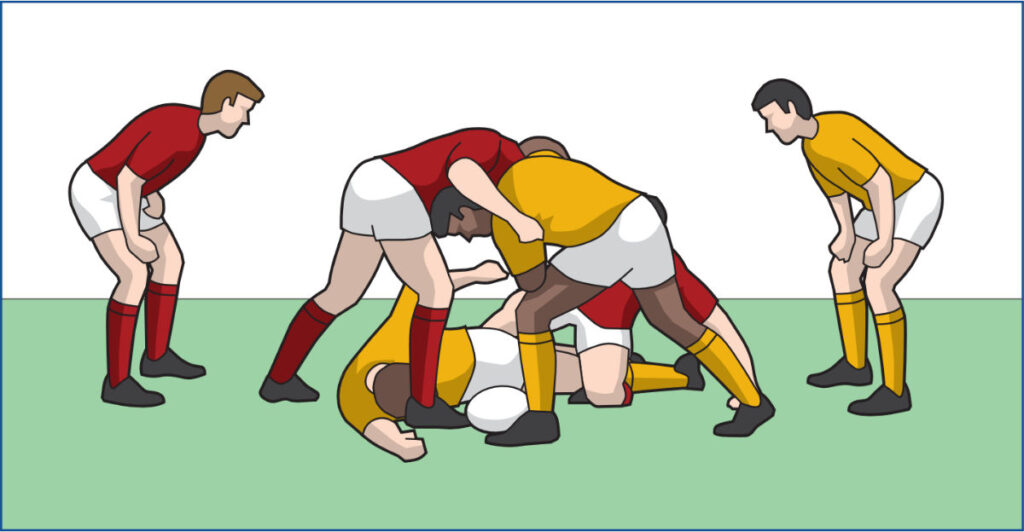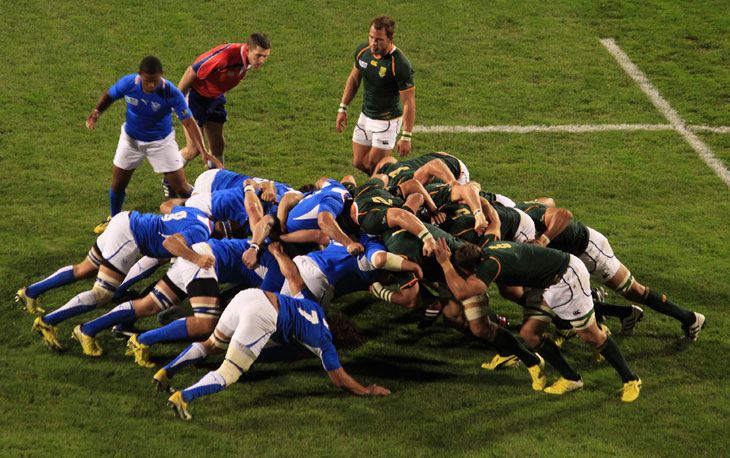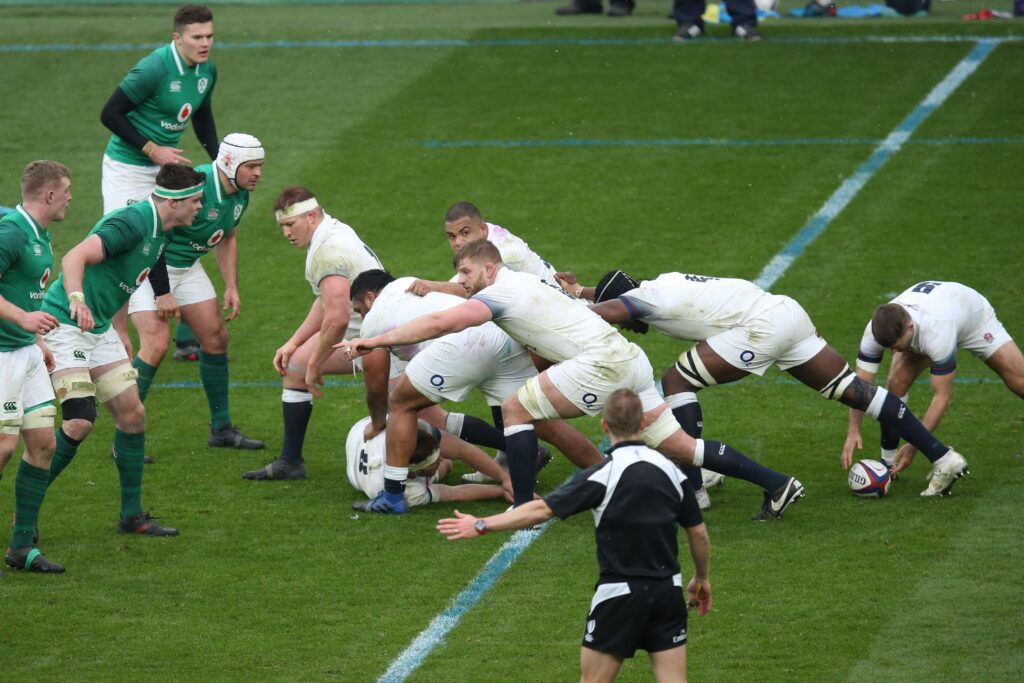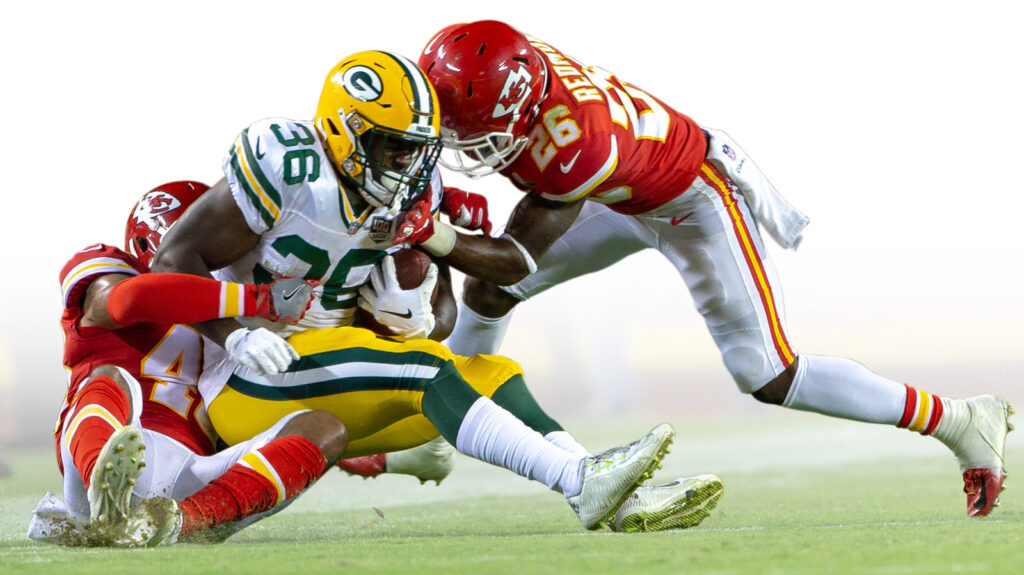Since there is no other sport that incorporates rucking, it might be difficult for rookie rugby players to understand what a “ruck” is. But once you have a better understanding of a ruck, also known as a “breakdown,” it’s rather simple to comprehend.
What is a ruck in rugby and the precise laws governing the breakdown are provided below:
What is a ruck in rugby?

One of the main differences between rugby and American football is that when a player has been tackled, play continues. In rugby, a player who has been tackled to the ground is given one movement before having to release the ball. This is done to avoid tackled players holding on to the ball and bringing the game to a screeching halt.
The opportunity for the defense to seize the ball when the player releases it arises because a player who is tackled must release the ball. The teammates of the tackled player can engage the defender and try to ruck them off the ball in order to keep possession by preventing them from reaching down and grabbing the released ball off the ground.
When does a ruck become?
When at least one player from each team is “engaged” in contact over the ball, a ruck is created. The referee decides when an engagement is created, and will typically declare “ruck formed” when this has happened. No defender may touch the ball with their hands once the ruck has been established. If they do, the attacking team receives a penalty for “hands in the ruck.” The only way for the defense to stop an attacking ruck once it has formed is to drive through the breakdown and get the attacking ruckers off the ball.
What is a Ruck in Rugby: The Size

The position of the tackled player’s body on the ground determines the size of the ruck in the first place. The breadth of the ruck, also referred to as the “gate,” is determined by how wide their body is on the ground. The defensive players trying to come and steal the ball or join the ruck must also enter the ruck through the gate, much as his or her supporting colleagues. A player commits a “coming in from the side” penalty if they enter the breakdown from outside the gate.
In addition, the defense’s offsides line is established by the defensive player who is furthest back in the ruck. Until the ball is out from beneath the ruck, none of the defensive players may cross the offsides line. A defender will be flagged for “offsides” if they move forward of the line before the ball is released.
There can be as many players from either team in a ruck, but you should be mindful that the defensive offside line will likely move further and further back the more players you have in a ruck.
How do you get into a ruck?

Players must enter a ruck through the gate, not from the side, as was previously specified. Players who enter the ruck must also remain on their feet when they make contact. This is a safety concern that keeps the breakdown from turning into a brawl.
A defender will frequently arrive at the ruck before the opposing team and gain possession of the ball. Attacking ruckers can hit the defender off the ball and force them to drop it as they try to steal, or “poach/jackal,” the ball.
They must, however, be capable of “diving over,” or remaining on their feet without leaving the ground. In a similar vein, the defender attempting to steal the ball must support their own weight while doing so. Whether the defender could remain standing if you yanked their arms out from under them serves as a solid indicator of this for the referee. In other words, if it weren’t for their arms or hands, would they be able to stand? The referee will penalize them for “getting off their feet” if they are unable to do so.
What happens when a player is both tackled and tackled?

Each player who makes the tackle is also accountable for their actions on the field. After being tackled, a player is only permitted to move once on the ground before having to release the ball. The movement must consist of just one motion, which can be a roll, a swift crawl, or anything else the player chooses. The referee will penalize them for “not releasing” or “holding on” if they haven’t relinquished the ball after their move.
On the other hand, the tackler must roll out of the tackle zone before standing up again. This keeps the ruck area from becoming congested and slows the ball down. The player who makes the tackle must release the ball carrier if they are able to stay on their feet in order to return the ball to their own team. The defender will receive a penalty for “not rolling away” if they do not roll away after the tackle. They will be fined for “not releasing” if they do not release the player who has been tackled.
Conclusion
Abow is an article that talk about what is a ruck in rugby and other rules in order to balance for rugby teams. Hope you have a useful information from Rugby.
Please read: http://rugbyqa.com/2023-rugby-world-cup-9-host-stadiums-information/

